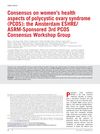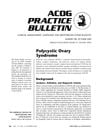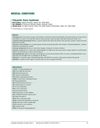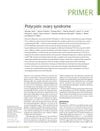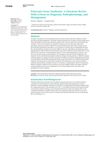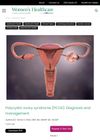Workup and Management of Polycystic Ovary Syndrome
January 2015
in “
Springer eBooks
”
polycystic ovary syndrome PCOS hyperandrogenism ovulatory dysfunction polycystic ovaries hormonal contraceptives metformin clomiphene citrate hirsutism antiandrogens isotretinoin androgenic alopecia insulin resistance type 2 diabetes cardiovascular disease progestin therapy endometrial cancer birth control pills Clomid Accutane hair loss diabetes heart disease
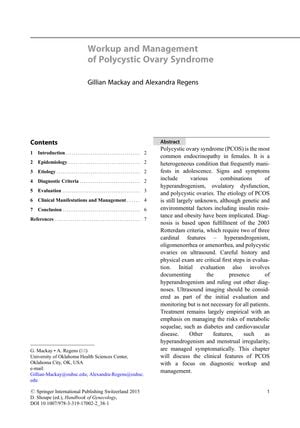
TLDR The document concludes that managing PCOS involves lifestyle changes, medication, and monitoring for associated health risks.
The 2015 document outlines the diagnosis and management of Polycystic Ovary Syndrome (PCOS), affecting 6-15% of women of reproductive age in the U.S. Diagnosis is based on the Rotterdam criteria, requiring two out of three features: hyperandrogenism, ovulatory dysfunction, and polycystic ovaries. Management includes lifestyle changes, hormonal contraceptives, and metformin, with clomiphene citrate as the first-line therapy for those seeking pregnancy, achieving live birth rates of 20-40% within the first six ovulatory cycles. Metformin can be combined with clomiphene to improve ovulation, especially in obese patients. Women with PCOS face increased risks of gestational diabetes, hypertension, and newborn morbidity. Hirsutism, affecting 70% of women with PCOS, can be treated with weight loss, oral contraceptives, and antiandrogens, while severe acne may require isotretinoin. No effective treatment exists for androgenic alopecia. Obesity, prevalent in 60-70% of women with PCOS, can be managed with weight loss, medications, or surgery. Screening for cardiometabolic diseases is recommended due to higher risks of insulin resistance and type 2 diabetes. Cardiovascular disease risk is elevated, and hormonal contraceptives or progestin therapy can protect against endometrial cancer. The condition's etiology includes genetic and environmental factors, such as obesity and insulin resistance, and treatment focuses on symptomatic relief and lifestyle modifications.
